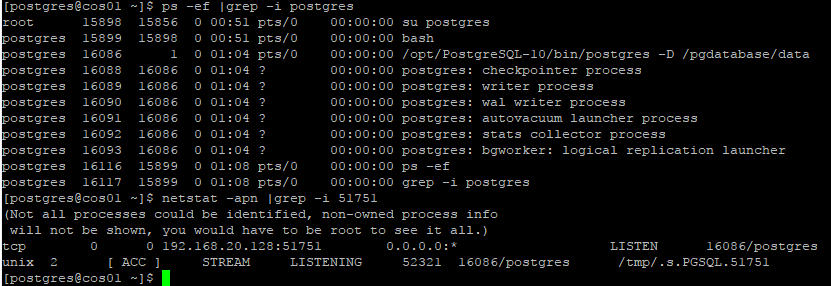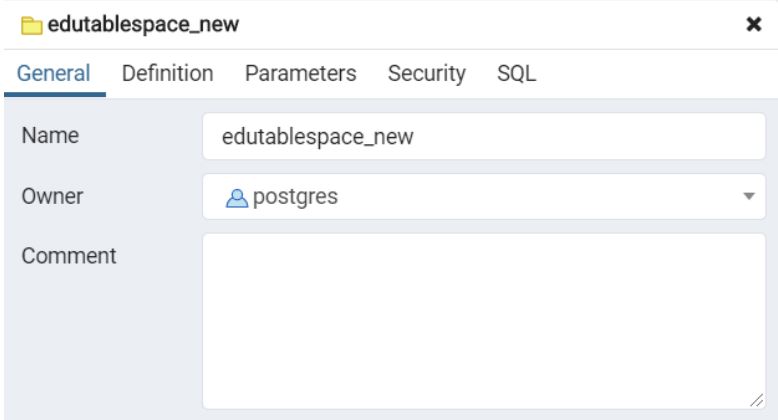
The new user now has the same permissions as the master user. Note: Replace new_master with your user name. Here, we assume the use of the default superuser named postgres. Grant the role that you created rds_superuser permissions: postgres=> GRANT rds_superuser TO new_master First, you must have access to the database as a superuser in order to delegate some powers.
#POSTGRES CREATE SUPERUSER PASSWORD#
Note: Replace new_master and password with your user name and password.Ģ.

Create a new user by running the CREATE ROLE command: postgres=> CREATE ROLE new_master WITH PASSWORD 'password' CREATEDB CREATEROLE LOGIN Don't assign this role to a user unless they need the most access to the RDS DB instance.ġ. Important: The rds_superuser role has the most privileges for an RDS DB instance. To prevent this, review How can I stop Amazon RDS for PostgreSQL from logging my passwords in clear-text in the log files? Note: PostgreSQL logs passwords in cleartext in the log files. However, you can create another user that has all the same permissions as the master user. (Thus, a client is not limited to connect as the role matching its operating system user, just as a person's login name need not match his or her real name.) Since the role identity determines the set of privileges available to a connected client, it is important to carefully configure privileges when setting up a multiuser environment.A DB instance that runs PostgreSQL has only one master user that is created when the instance is created. The set of database roles a given client connection can connect as is determined by the client authentication setup, as explained in Chapter 21. Therefore it is often convenient to maintain a naming correspondence between roles and operating system users. Now I create a user: postgres CREATE ROLE dietrich ENCRYPTED PASSWORD 'md5XXX' LOGIN NOCREATEROLE NOCREATEDB NOSUPERUSER Okay. Many applications assume the name of the current operating system user by default (including createuser and psql). You can also use it to grant or revoke user’s privileges in a particular database. For example, the psql program uses the -U command line option to indicate the role to connect as. Creates, alters, or removes a user (role) from a PostgreSQL server instance (cluster in PostgreSQL terminology) and, optionally, grants the user access to an existing database or tables. The role name to use for a particular database connection is indicated by the client that is initiating the connection request in an application-specific fashion. In order to create more roles you first have to connect as this initial role.Įvery connection to the database server is made using the name of some particular role, and this role determines the initial access privileges for commands issued in that connection. It is common, but not required, to arrange for this role to be named postgres. This role is always a “ superuser”, and by default it will have the same name as the operating system user that initialized the database cluster, unless another name is specified while running initdb. In order to bootstrap the database system, a freshly initialized system always contains one predefined login-capable role. The psql program's \du meta-command is also useful for listing the existing roles. SELECT rolname FROM pg_roles WHERE rolcanlogin ERROR: must be superuser to create superusers To check, if Im just too stupid and blind or something, I created a postgres in AWS and tried it out. Since this is a Managed Service, Only Microsoft is part of SUPERUSERS Group Details in link here The Azure Database for PostgreSQL server is created with the 3 default roles defined. Or to see just those capable of logging in: In Azure Postgres, we cannot CREATE SUPERUSERS. To determine the set of existing roles, examine the pg_roles system catalog, for example:

More details appear below.) To remove an existing role, use the analogous DROP ROLE command:įor convenience, the programs createuser and dropuser are provided as wrappers around these SQL commands that can be called from the shell command line: (In practice, you will usually want to add additional options, such as LOGIN, to the command. You can now run commands as the PostgreSQL superuser.To create a user, type the following command: createuser -interactive -pwprompt At the Enter name of role to add: prompt, type the user's name.

Name follows the rules for SQL identifiers: either unadorned without special characters, or double-quoted. To create a PostgreSQL user, follow these steps: At the command line, type the following command as the server's root user: su - postgres. To create a role use the CREATE ROLE SQL command: Database roles are global across a database cluster installation (and not per individual database). In practice it might be convenient to maintain a correspondence, but this is not required. Database roles are conceptually completely separate from operating system users.


 0 kommentar(er)
0 kommentar(er)
